Tekonsha Prodigy P3 Trailer Brake Controller w/ Custom Harness - Up to 4 Axles - Proportional
with factory Tow Package
without factory Tow Package
Will this fit?
To see if this custom-fit item will work for you please tell us what vehicle you'll use it with.
- All Info
- Reviews (6614)
- Q & A (0)
- Videos (7)
- Photos
Tekonsha Trailer Brake Controller
- Electric
- Electric over Hydraulic
- Proportional Controller
- Up to 4 Axles
- Tekonsha
- Under-Dash
- Plug-In
- Under-Dash Box
- Multiple Trailers
- LCD Display
The Tekonsha P3 is a brake controller beloved for its reliability and useability. You're able to save your settings and multiple profiles. It's easy to install, and with the custom harness, it's plug-and-play.
Features:
- Proportional - Smooth, safe, and good for your brakes long-term
- Great for a fleet - Save and customize multiple profiles
- Installs quickly - Mount the bracket to the dash, then attach the unit to the bracket
- Plug-and-play - Custom harness included
- Simple controls - Large, accessible buttons for all your settings
- Easy-to-read display includes diagnostics - Straight-forward messages get you to the root of the problem quickly
- Safe - Built-in safeguards protect vehicle, trailer, and controller
- Quick disconnect - Easy to unplug and remove the controller when you don't need it
- Automatic leveling - Must be parallel with direction of travel and horizontally level
Specs:
- Application: trailers with up to 4 axles (8 brake assemblies)
- Compatible with electric or electric-over-hydraulic trailer brakes
- Overall dimensions: 5" long x 3-1/2" wide x 1-3/8" tall
- LCD display dimensions: 1-3/16" wide x 9/16" tall
- Mounting range: 360 degrees vertically
- Warranty:
- Limited lifetime on brake controller
- Limited 1-year on wiring harness
Braking Output

Braking output is the maximum amount of power that will be applied to your trailer's brakes. How much braking output you need is determined by the weight of your trailer; a heavier trailer will need more power to bring it to a stop. You want to go as high as you can without the trailer brakes locking up.
Use the arrow buttons on the front of the module to set the output.
Power Boost for Heavy-Duty Towing
The boost setting controls the aggressiveness of your trailer's braking, meaning how quickly the brakes reach the maximum braking level. If your vehicle takes too long to come to a stop, increase the setting. If it stops too abruptly, decrease the setting.
Depending on the level of boost, your trailer brakes can start at either 13 percent or 25 percent of the set braking output. So instead of starting at 0, the brakes will start at 25 percent and get to 100 percent sooner. This keeps the trailer from pushing your tow vehicle forward.
Boost Levels:
| Approximate Gross Trailer Weight | Boost Level | Increase in Initial Power Output |
|---|---|---|
| Less than tow vehicle GVW | B1 | 13% |
| Equal to tow vehicle GVW | B1 or B2 | 13% or 25% |
| Up to 25% more than tow vehicle GVW | B2 or B3* | 25% |
| Up to 40% more than tow vehicle GVW | B3* | 25% |
*Both B2 and B3 offer a 25-percent boost in initial power. But the braking curve for B3 is more aggressive than that of B2. This means that, even though you will start out with the same intensity when using these boost levels, you will get an overall more aggressive braking experience with the higher level. So if you use B3, you will reach maximum braking sooner than if you use B2.
Manual Override
To engage the manual override, twist the rotary-style lever from right to left. This will activate the trailer's brakes and brake lights independently of your vehicle, great for stopping sway or controlling your trailer's momentum in an emergency.
Save Your Settings in Multiple Profiles
The P3 is able to store your settings in multiple profiles so that you can have them ready to go for different trailers and drivers. Even the display is super customizable: you can change the screen color, brightness, and language to make it easy to use.
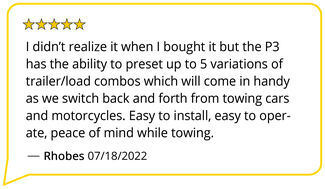
Troubleshoot with Detailed Diagnostics
The P3 makes it easy to troubleshoot problems as they come up, with comprehensible and detailed diagnostics displayed on the screen.
















Diagnostic troubleshooting messages include:
- Battery voltage
- Voltage supplied by stop light switch when brake pedal is depressed
- Output voltage to trailer brakes
- Output current to trailer brakes
Diagnostic warning signs include:
- Open ground
- Overload
- Output short
- Power loss
- No trailer connection
Safety Features
The Prodigy P3 offers advanced safety features to prevent damage to various components of your towing setup.
-Integrated reverse battery protection shields the brake controller and your trailer's breakaway system from shorts.
-When the P3 is not in use, it draws only 3.6 milliamps, minimizing drain on your vehicle's battery.
-Any time your vehicle and trailer are at a standstill with the brakes applied for more than 5 seconds, the hold feature will kick on and reduce power to just 25 percent. This will keep your trailer in place without your brakes overheating.
Installing the Tekonsha P3
Installing the P3 is incredibly simple. You'll mount the bracket to your dashboard then mount the unit to the bracket. Plug the custom harness into your vehicle and into the unit. Done!
Keep in mind that the P3 must be horizontally level and parallel with the direction of travel to work correctly.


With a replacement wiring harness (sold separately) and replacement bracket (TK5906 - sold separately), you can even transfer the Prodigy P3 to another vehicle.


Note: If you don't already have a 7-way plug at the back of your vehicle, take a look at our exclusive 7- and 4-way brake controller installation kit (ETBC7 - sold separately).
What is Proportional Braking?
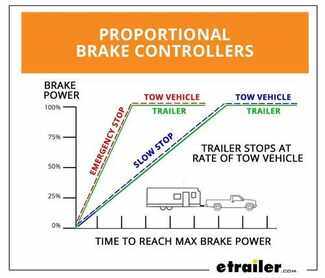
Proportional braking means that your trailer brakes mimic your tow vehicle's brakes. If you slam on the brakes, your trailer brakes will activate with the same intensity; if you brake lightly, your trailer brakes lightly too. The trailer's braking is in proportion to your vehicle and trailer.
The Prodigy P3 uses an internal inertia sensor to detect how your vehicle is braking so it can send the right amount of braking power to your trailer. It measures the inertia of your tow vehicle and activates the trailer's brakes to slow at the same rate. The result is uniform braking across your towing setup. No push-pull action - just smooth, proportional braking every time.
90195 Tekonsha Prodigy P-3 Proportional Trailer Brake Control
Replaces 39526 Hidden Hitch and 20195 Draw-Tite Intella-Stop Xtreme Proportional Brake Control
302600 Tekonsha Brake Control Wiring Adapter with 2 Plugs
Replaces 3026-P
Installation Details
California residents: click here

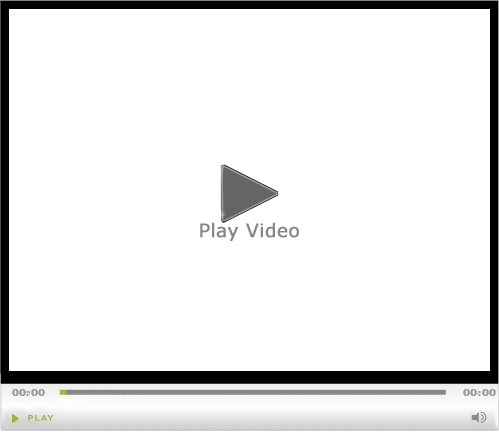
Videos are provided as a guide only. Refer to manufacturer installation instructions and specs for complete information.
Video Transcript for Install: Tekonsha Prodigy P3 Trailer Brake Controller on a 2015 Buick Enclave
Today on our 2015 Buick Enclave, we're going to take a look at and show you how to install the Tekonsha Prodigy Pe Proportional Trailer Brake Controller, part number is 90195. To aid in the installation, we're also going to be using part number 3026-P. Now the P3 from Tekonsha is one of the best brake controllers out there on the market right now. It does an excellent job of providing all the braking power you're going to need without overdoing it. The proportional system helps to save wear and tear on your trailer and on your truck by giving us the braking force we need when we need it. In an emergency stop situations where we really stand on our brake very hard, we're going to get that braking force sent to our trailer. The proportional aspect of the controller allows it to do that.
In an emergency braking situation, the internal sensor senses the negative deceleration and that sends a lot of braking force back immediately. In a normal stop situation, it's going to send a normal amount of braking power back, and if we're just in stop and go traffic, it's going to send very minimal braking power back. Unlike a time delayed system, we don't have to wait for activation like this. We don't have to wait for it to slowly build up. This is going to give us the force we need immediately. To adjust the amount of power, you see here it says 14 We've got our gain adjustment buttons over here.
The lower we set our gain, the less braking force we're going to be sending out to our trailer. For lighter loads or smaller trailers, we want less braking force. On heavier trailers, we're going to want more braking force. The idea is to have this set as high as you can before you start dragging the wheels on the trailers, which can cause flat spotting. To further fine tune that you have your boost mode.
It's going to be the button on the top left here. See right now we don't have any boost set. We select it. It's going to say boost level 1, boost level 2, and boost level 3. Essentially this is designed for as the trailers get larger and larger and larger, we're going to turn out boost to a higher setting. That changes the quickness and the aggressiveness in which our brakes are going to be applied.
The great thing about the P3 is it's fully programmable and it allows you to adjust your display. We can adjust the brightness, the color and the contrast. You've got several colors there that you can pick from, and we can store up to 7 user preferences inside of the brake controller, so if we have different trailers or different weights, or different drivers, everybody can have their own pre-set, get in here, hit the button and you'll be ready to go. This is also going to work out great for the electric or the electric over hydraulic braking systems. If we're heading down the road and our plug becomes disconnected, you'll see how the screen's going to flash that red and indicate to us that we have something that needs to be addressed. As soon as we get that reattached and plugged back in, we're right back to normal. On the bottom here we also have an easy to get to manual override lever. This is going to allow us to send braking force to our trailer without the need to hit the brakes in our truck, so in sway situations or something like that when we need to get it addressed, we can easily bring this over to whatever point we want, to apply the right amount of brakes that we need at the time to get that corrected. The first thing we're going to do is gain access behind this panel to get to the plug that we'll be plugging our pigtail into. We'll have 3 push pin fasteners to remove. You can see we've got one here, one closer to the middle and one just above our parking brake. The small, metal round part, we want to pull that out first. Now we'll pull down and just straight back to us. We can set this aside. We'll reinstall it later. If we look right behind the parking brake, there will be the larger gray plug there. It's going to have some electrical tape holding it to this wing. Cut that down and we can plug our pigtail right into it. Now our connector is going to plug right in there, locking tabs are on the top, just make sure you hear it click. It will spring up there indicating we've got a good connection. For mounting our brake controller in this application we're going to be using this small metal bracket with the quick release. That's going to allow it to fit right up in this area. If you don't want to use this style to use the metal bracket, you're probably going to have to mount it right in this area or over here on the dashboard, but I would use caution in both of those areas because you're limited in the room you have here in the floor board. You don't want to hit your leg on it every time you get in and out. We'll bring it right up there where we want it to go. That looks like it will be in a fine spot, easy to get to. Pick our location, we'll get our bracket leveled out there and make the marks for our location. We'll use one of the provided, self-tapping 1/4 inch screws. We'll place that through our bracket and get it started. We'll place that right in between there. It's going to be a little bit tight but we'll get our screw started from the outside. Now we're ready to plug our brake controller in. It lights up there, indicating we got power and we'll bring it up and we'll slide the back end of the bracket, and slide it upward to attach the rest. The little bit of pigtail we've got left over, we'll zip tie this up and out of the way. There's a wire loom that runs right up here. That would be a good spot to attach it to. Now we'll get our panel slid back up in position here. We can re-secure it with our fasteners. You'll see there's a little notch in this cover right here that works out great. If you just bring your pigtail over, we can push that panel up, perfect place to keep it up and out of the way. To test out your controller, you'll want to plug a trailer into it. It's going to switch from that standard P3 screen that we had initially, into our controller screen. We'll just operate that manual override lever. All right. It's working great. Now with everything working properly, that's going to complete our installation of the Tekonsha Prodigy P3 Proportional Brake Controller, part number 90195, also using the Tekonsha Plug In Wiring Adapter, part number 3026-P, both on our 2015 Buick Enclave.
Customer Satisfaction Score:
98% were satisfied with this product
2% of customers were not satisfied
- Wrong item was ordered
Ratings & Reviews
4.9
3506 reviews
See what our Experts say about this Tekonsha Trailer Brake Controller
- Can I Add Electric Brakes To A 1993 EZ Loader Boat TrailerHello Mike. It sounds like you are wanting to add electric brakes to your boat trailer that currently has no brakes. This is possible, but you will first need to make sure that your axle is equipped with a brake flange at the base of the spindle. The brake flange is necessary for adding brakes. If you do have a brake flange, you will next need to determine your bearing sizes. Electric brakes will require new hubs and drum assemblies, and we need to be sure that there is a drum available...
view full answer... - Hitch, Weight Distribution and Brake Controller Recommendations for a 2017 Toyota Sienna XLEWe can get you everything you need for towing with your 2017 Toyota Sienna XLE. By plastic shield, I believe you are referring to the appearance panel underneath the Sienna, and that will have to trimmed a bit in each of the hitches available for the vehicle. A great Class III hitch would be the Curt # C13105, which is rated for weight distribution and has been given a nearly 5-star review on our site by the over 500 customers that have rated it. As for a brake controller, the wireless...
view full answer... - Will The Curt Echo Manual Override Button C83HR Work Without The App?Hey John, good question. The app must be running in order for the separate manual override button part # C83HR to work. If your phone is not connected to the controller with the app running, the button will not do anything. I know the connectivity issues can be frustrating, but it might not necessarily be something you are doing wrong so much as the controller just being unreliable. This is by far the most common complaint we get about the Curt Echo # C51180 wireless controller. Most...
view full answer... - Difference Between Curt & Draw-Tite Trailer Hitches For 2018 Jeep Wrangler UnlimitedHi Ken, Starting with the wiring harness, I can verify for you the correct fit for the 2018 Jeep Wrangler Unlimited without a tow package is indeed the T-One Vehicle Wiring Harness with 4-Pole Flat Trailer Connector # 118786. Then for the hitches, the biggest difference between the Curt Trailer Hitch Receiver # C13392 and Draw-Tite Trailer Hitch Receiver # DT78MR is the length of the receiver. The Draw-Tite has a shorter receiver that can make it a bit more of a pain to add a ball mount...
view full answer... - Comparing the Universal Installation Kit # ETBC7 and the 7-Way RV Upgrade Kit # ETBC7LThere are a few differences between the Universal Installation Kit part # ETBC7 and the 7-Way RV Upgrade Kit part # ETBC7L. The biggest one is that part # ETBC7 comes with both the power and brake output wire you will need to run to the cab/battery whereas the part # ETBC7L only comes with the power wire you will need to run to the battery. The reason for this is because part # ETBC7L is geared more towards wireless brake controllers like the Curt Echo Mobile Trailer Brake Controller part...
view full answer... - Disc Brake Conversion Kit For 2021 Grand Design Solitude 310GKR With 7,000 lb AxlesHello Rick, thanks for reaching out. The 7,000 lb axle on your 2021 Grand Design Solitude 310GKR uses a standard bearing combination, so finding compatible disc brakes will be easy. Here is what I recommend: - DeeMaxx Disc Brake Kit - 13" Hub/Rotor - 8 on 6-1/2 - Maxx Coating - 9/16" Bolts - 7K # DE68YR - Hydrastar Electric Over Hydraulic Actuator Kit for Disc Brakes - 1,600 psi # HBA16-252-82 The disc brake kits are enough for one axle, so you will need two kits if you want brakes on...
view full answer... - Parts Needed to Add 7-Way to 2024 Hyundai Palisade LimitedThe factory wiring for both the 2023 and 2024 Hyundai Palisade has been a complicated subject. The pre-wiring you're referring to is not an actual trailer connector. You should have factory wiring and connectors which will allow you to add an OEM 7-way. I understand it says they all have this, but I would make sure you can find it on your particular vehicle if you plan to use it. There have been a lot of reports on forums where people said the connection was missing. At this time, nobody...
view full answer... - Will the Redarc Tow-Pro Liberty Controller Work with a 2023 Ford RangerHey Jacques, thanks for reaching out! The Redarc Tow-Pro Liberty # RED52VR will work just fine on your 2023 Ford Ranger, and it will install by splicing into a bundle of wires under your driver side dash. We have a video of this same process of the Prodigy P3 # 90195 on a 2021 Ranger that I'm linking for you to reference, but we don't have anything of the Liberty on a Ranger at this point in time. I'm not sure why we don't have this listed out to fit "with the tow package", but I'll send...
view full answer... - What is the Difference Between the Tekonsha Prodigy P2 and the P3 Brake ControllersActually, the P3 now has the upgraded axis accelerometer like the P2. The Tekonsha P3 Trailer Brake Controller # 90195, will work with both electric over hydraulic brakes on the trailer as well as electric brakes. It has a menu option on the display that allows the user to switch between the two systems. I have included a link to the installation details for the P3. The P2, # 90885, will also work with both electric brakes and electric over hydraulic brake systems but the mode is selected...
view full answer... - Parts Needed For Towing a Camper Behind a 2023 Toyota Tacoma Without Towing PackageSorry for the confusion on the details for the Tekonsha OEM Replacement Vehicle Wiring Harness # 22117 for your 2023 Toyota Tacoma. Since it can be used as a replacement for the OEM tapping into that connector is easier on those vehicles. Since you do not have the connector on your Tacoma you can simply use a Test Light # PTW2993 to find the correct wire on your brake switch which is on the brake pedal mount. Then you will be able to connect a controller like the Prodigy P3 # 90195. I personally...
view full answer... - No Trailer Connection on Tekonsha P3 Brake Controller 90195 on a 2000 Toyota TundraI would start by inspecting the connector on your trailer and the vehicle to make sure there is not corrosion in the connector which could be causing a bad or weak connection. If there is corrosion in the trailer side connector, you would need to replace it with 7-way Connector, part # A7WCB. For the replacement vehicle side connector, you would need Adapter 4 Pole to 7 Pole, part # 30717. For future use, I would recommend using Dielectric Grease for Electrical Connectors, part # 11755,...
view full answer... - Parts Needed To Add Hopkins 7/4 Pole Connector To a 2020 Ford F-150 With Factory 4-WayI have a couple ways you can install the 7- and 4-Pole Trailer Connector Socket # HM40975 on your 2020 Ford F-150 with a 4-way flat factory connector. The first is going to be the easiest but is more costly. You will use the harness from the Curt 7-Way # C56413 and connect to the connector you found. The Curt harness will connect to the factory wiring as seen in the installation video I have linked near the bottom of the page. Otherwise we do have the Hard Wire Connector # 20147 which...
view full answer... - How to Pick Out Brakes for 3,500 lb Boat Trailer with Tandem AxlesInstalling brakes on a trailer really isn't too bad. The install is pretty basic and a DIYer like yourself wouldn't have a problem at all. To determine the parts you need though we need to for sure know what axles/spindles you have so that we pick out the right parts. I attached a couple guides for that down below for you to check out. There are a lot of boat trailers that have great results with electric drum brakes so if that's a route you are interested in that's what I would recommend...
view full answer... - Troubleshooting a Tekonsha P3 Brake Controller that Reads Trailer Not ConnectedIf you sever the blue wire leaving the P3 controller part # 90195 leaving enough room to reconnect it and test the end of the wire leaving the controller with a circuit tester like part # PTW2993 you should see voltage when you slide the manual override lever. If not, then the brake controller is bad. If you see voltage there instead then the problem is somewhere on the brake output circuit of your vehicle or trailer. Corrosion on the trailer connector typically causes this problem. If...
view full answer... - Electric Over Hydraulic Brakes Don't Work w/Brake Pedal on Newer GM Trucks w/OEM Brake ControllerLike you said, many factory integrated brake controllers will not work well with electric over hydraulic trailer braking systems. Some of the newer versions of these controllers now have an electric over hydraulic mode. Check to see if any of your trucks have this mode and, if they do, if the braking starts working with the pedal. Otherwise there are a couple of solutions to solve this issue. First, there may be an adapter that will allow the factory controllers to work but it depends...
view full answer... - Trailer Hitch And 7-Way Wiring Package For 2019 Kia Sorento Without Factory Tow PackageHello Anton, thanks for reaching out. For your 2019 Kia Sorrento I recommend the etrailer Class 3 Hitch # e98843. This has a 2" receiver, 5,000 ls towing capacity and 750 lb tongue weight capacity. Install video and instructions are linked for you below. For your wiring, there are two kits you will need to complete everything. You will need the Tekonsha T-One Wiring Harness # 118583, as well as the Universal Installation Kit # ETBC7. These will contain everything you need to wire your...
view full answer... - Troubleshooting Only One Side of Trailer Brakes Locking UpYes, when the electric signal is sent from the Tekonsha Prodigy P3 Trailer Brake Controller # 90195 to the trailer's brakes, it should cause both sides to lock up. Since only one side is locking up, it could indicate that one brake assembly needs to be manually adjusted. I attached a video that shows how to do this process. If that doesn't get it to respond then there is possibly an issue with the wiring going into the brake assembly which you can test using a circuit tester like # PTW2993....
view full answer... - Showing 12V Power On The Red Wire From Tekonsha Prodigy P3 PigtailIt sounds like you are hardwiring the Tekonsha Prodigy P3 Trailer Brake Controller part # 90195. The red wire should only show power at the brake controller when the brake pedal is depressed. It should be connected to the stop light wire on above the brake pedal that only shows power when the brake is depressed. If it is showing power when the brake pedal is not depressed than it is not connected to the correct wire at the brake pedal. The 12V should be showing on the black wire which...
view full answer... - Does Prodigy P3 Brake Controller Eventually Shut Itself Off With No ActivityAfter 10 minutes of inactivity the Prodigy P3 part # 90195 will go into sleep mode which means it basically shuts itself off without losing presets.
view full answer... - Recommended 7-Way Trailer Wiring On 2007 Ford E-350 Super Duty VanIf you don't already have a 4-way wiring harness, we need to start there to get your 7-way. For a 4-way, I recommend the Curt T-Connector Vehicle Wiring Harness with 4-Pole Flat Trailer Connector # C56020 which plugs in behind the tail lights of your 2007 E350. You will have to remove the tail light assemblies and interior trim paneling to access the factory connections. I've attached a video to help. Then you will use the Universal Installation Kit for Trailer Brake Controller - 7-Way...
view full answer... - Timbren Axle-Less Trailer Suspension System Rated for Higher Than 2,000 PoundsThe Timbren Axle-Less Trailer Suspension System, part # A20RS545, is rated for a total of 2,000 pounds. Essentially, it's designed to work in place of a suspension system and a 2,000 pound standard axle. If you need a 3,500 pound system use part # A35RS545 that has idler hubs with the same 5 on 4-1/2 bolt pattern. If you want to add brakes instead use part # A35RS545E that includes the hub and drums, as well as the brake assemblies. There really isn't anything to retrofit. You just...
view full answer... - Stealth Hitch And Towing Kit For 2024 Volvo XC90Hello Geoff, thanks for reaching out. We do offer a stealth hitch and wiring package for the 2024 Volvo XC90. For that, I recommend the following: - Stealth Hitches Hidden Trailer Hitch Receiver w/ Towing Kit - Custom Fit - 2" # SH27FRT This comes with everything you need to pull a trailer. You get the stealth hitch and rack receiver, plus the towing kit with active harness. The hitch has a max towing capacity of 6,000 lbs so this will be plenty strong for a 2,500 lb enclosed trailer....
view full answer... - Parts Needed to Add Disc Brakes to Trailer with Dexter 12K Axles w/ Electric Drum BrakesThe Kodiak # K2R1258L12 Disc Brake Kit is compatible with a 12K Dexter axle with a 7-bolt brake mounting flange. Your current wheels/hubs should have an 8 on 6-1/2 inch bolt pattern. You'll also need an electric over hydraulic brake actuator, a brake line kit, a break away system and a brake controller that's compatible with electric over hydraulic brake systems. For the electric over hydraulic actuator, I'd recommend going with the Hydrastar # HBA16. Our install techs have found it to...
view full answer... - How to Convert a Trailer with Surge Brakes to Electric Over Hydraulic BrakesYou can convert surge brakes to an electric over hydraulic braking system. To do this, you will need an electric over hydraulic actuator and a brake controller. For an electric over hydraulic actuator, I recommend looking at the Carlisle HydraStar units. If your trailer has drum brakes, you will want part # HBA-10. If your trailer has disc brakes, then you will want part # HBA16. I have also attached a link to all of our electric over hydraulic actuators for you to check out your options. The...
view full answer... - Where to Find Brake Controller Install Port on 2018 GMC AcadiaYour 2018 GMC Acadia actually has blunt cut wires for you to splice in a brake controller like the Tekonsha Prodigy P3 # 90195. The last Acadia to use the Adapter # 3026-P that you referenced was the 2017 Limited which was the same as the 2016 model year. The 2017 New Body and newer have the blunt cut wires up under the dash. I took a look at the online version of the owner's manual for your 2018 Acadia and on page 278 it says that the blunt cut wires can be found above the parking brake...
view full answer... - Installing an Electric Brake Controller in a 2018 Chevrolet Traverse with a Factory 7-Way ConnectorThe Electric Brake Controller Adapter, part # 3026-P, is confirmed to fit the 2018 Chevrolet Traverse Limited. If you have a Limited model you should have the connector underneath your dashboard. Since you don't have the connector under your dash instead of using the # 3026-P adapter you need our # 5506 wiring kit to install the Prodigy P3, part # 90195. The wiring kit includes everything to power a brake controller. I've linked a video from when we installed our # ETBC7 kit on an older...
view full answer... - Troubleshooting Brake Controller of 2018 GMC Adacia Not Working with Brake PedalSo the red wire of your brake controller needs to be connected to a circuit of your 2018 GMC Acadia that sees voltage only when the brakes are applied. If you used a custom install harness on your Acadia like the # 3026-P to install the controller then most likely you have a blown third brake light fuse since that's connected to the stoplight circuit for the brake controller. If the controller was hardwired to a stoplight circuit you most likely need to check the condition of the connection...
view full answer... - Installing an Electric Trailer Brake Controller on a 2010 Chevy Traverse with Tow PackageThe connector you need for a 2010 Chevy Traverse with Towing package is part # 3026-P. I have added a link to it below. I am looking at the instructions and it appears you will need a small flat head screw driver to gently pry the plastic push-rivets out to release the panel. I have added a link to the instructions below so you can see where the connector is located.
view full answer... - Brake Controller Recommendation for 2015 Chevy TraverseYour 2015 Chevy Traverse should have a 7-way trailer wiring connector present at the rear of it. If it does not you'd need the part # 118271 to give you one that taps into the factory wiring. Then all you'd need is a wiring harness designed for your vehicle like the part # 3026-P. For a brake controller I would recommend the Prodigy P3 Brake Controller part # 90195. This is our best selling brake controller because of how well it works and how easy it is to setup. This is a proportional...
view full answer... - Where to Wire Trailer Brake Controller In 2017 Chevrolet TraverseYes, the 2017 Chevrolet Traverse has a plug under the dash for an adapter. You can use part # 3026-P. Take a look at the installation video I attached. Our installer finds the plug behind the dash at the 3 minute mark.
view full answer... - Is there a Plug and Play Harness to Install a Brake Controller on a 2019 Chevy TraverseWe know that the 2017 Chevy Traverse with factory 7-Way trailer connector had a plug-in location for a brake controller but nothing is shown for the 2019 Traverse. I would check under the dash, to the left of the steering column, for that wire bundle mentioned in your manual. It is likely held together with a white tag (that is traditionally how GM has handled the wire bundles). If the wire bundle is present the tag should list the functions of the wires. On a brake controller such as...
view full answer... - Hardwiring Tekonsha Prodigy P3 Brake Controller in 2011 Chevy Traverse and 2015 Chevy ColoradoFor your Prodigy P3 # 90195 on your 2011 Chevy Traverse, if you have the factory 7-way then you just need wiring harness # 3026-P. If you don't have that then we recommend using the # ETBC7 kit that will have you hardwire from the battery using a circuit breaker. The circuit breaker used for the brake controller power is a 20 amp like # PK54520. I've attached a video of the 12V power wire connection, but it does not include the brake controller power connection that will be nearly...
view full answer... - Recommended Brake Controller and Wiring Adapter for a 2015 Chevy Traverse w/ the Factory Tow PackageHello Carl! Your 2015 Chevy Traverse does indeed come with a port to plug in a brake controller so long as you have the factory tow package. You mentioned it being tow ready so I wanted to clarify that as long as your Traverse came from the factory with a 7-way harness you'll have the necessary port. I have attached a picture below that will show you exactly where to find the port. As far as using the Tekonsha Primus IQ Trailer Brake Controller item # TK90160, I currently have this one...
view full answer... - Availability of Diagram for Brake Switch for Chevy TraverseWe don't have access to a diagram but have you checked the wiring for 12 volts with brake applied with a circuit tester like part # PTW2993? That's the only reliable way we have to find it.
view full answer... - Brake Controller Plug-In Connector Location on a 2017 GMC Acadia Denali with OEM 7-WayDid you remove the panel under your driver's side dash? The plug for the adapter # 3026-P should be located there, taped to another harness to the left of the steering column (see attached photo). This exists if your 2017 GMC Acadia Denali has a factory 7-Way connector at the rear. The plug-in adapter that I referenced will allow you to install a brake controller like the Tekonsha Prodigy P3 # 90195 without hardwiring anything. If you do not have a factory 7-Way then you need a 4-Way...
view full answer... - Recommended 7-Way Trailer Connector On A 2016 Chevrolet Traverse Without Factory Tow PackageIf you are looking to match a factory type set-up on your 2016 Chevrolet Traverse, then the round factory plug you are referring to is a 7-way trailer socket. Because you don't have the factory tow package, we need to take a couple steps to get us there. The first step is to see if the factory wiring for a tow package is present. Look behind the bumper on the passenger side for a connector. If there is a connector, we will just need # 18138. This will allow us to simply connect the...
view full answer... - Brake Controller Wiring Harness for a 2006 Chevy Silverado 2500HDFor a 2006 Chevy Silverado 2500HD you will need brake controller wiring harness # 3015-P for a Tekonsha, Reese, or Draw-Tite brake controller. Chevy trucks also some times need additional connections under the hood to make everything fully functional. I have included a link to a help article that explains this for you. I have also included a link to a video showing the harness being installed on a similar truck.
view full answer... - How Does Brake Controller Install in 2014 Chevy Traverse with Factory 7-WayYour 2014 Chevy Traverse that has the factory 7-way does not require accessing the brake controller wiring if your plan was to install the Curt Echo Mobile brake controller part # C74VV that you referenced. Basically you'd plug in the Echo directly into your 7-way and once you've synced it to your smart phone you'd be ready to tow. If you wanted to install a more traditional brake controller like the P3 part # 90195 you'd use the install harness part # 3026-P which plugs into a gray connector...
view full answer... - Brake Controller Installation 2020 Chevy TraverseYour 2020 Chevy Traverse is prewired for a brake controller. Instead of a connector, there are 4 blunt cut tow package wires located under the dash below and behind where the headlight switch is located. These wires will directly connect with the wires of the pigtail included with your brake controller. The wire bundle should be taped to a larger wiring harness, and will usually have a white tag or label on it. The 4 wires will connect as follows: The blue tow package wire connects to...
view full answer... - Does a Brake Controller Plug Into a 2007 Chevy Silverado New Body or Does it Hardwire InThe 2007 Chevy Silverado New Body does not use a harness to plug in a brake controller. That stopped in 2006 and 2007 Classic models. Instead your truck has a tow package wire bundle under the dash, to the left of the steering column, held together with white tape. You can keep the harness that you have and just cut off the end that would normally plug into the truck. Brake controller white goes to truck white for ground. Controller black goes to truck red for 12 volt power. Controller...
view full answer... - Trailer Brake Controller Installation in 2013 Chevy Suburban 1500 LTZNeither the 2013 Chevy Tahoe nor the 2013 Suburban have an under-dash connection port for installation of a trailer brake controller such as the Prodigy P3 # 90195. Both vehicles do however have the necessary wiring already run. The 2013 Traverse with a factory 7-way DOES have such a port under the dash and uses part # 3026-P for any Tekonsha controller. You can refer to the linked article for specific details about brake controller installation in your Suburban. This article includes...
view full answer... - Installing Tekonsha Prodigy P3 Brake Controller on 2008 Chevy AvalancheThe 2008 Avalanche doesn't have a connector under the dash. The Avalanche will have bare ended tow package wires under the dash between the steering column and the emergency brake pedal. Look for a wiring harness with a white tag hanging from it. There should be 4 or 5 wires in the harness, and they would connect to the pigtail included with the Prodigy P3 # 90195 brake controller as follows: Red/black striped tow package wire to black pigtail wire White tow package wire to white pigtail...
view full answer... - Trailer Brake Controller Installation on a 2015 GMC AcadiaThe vehicle is indeed pre-wired, as you suspected. To get completely set up, you'll need a brake controller, the appropriate wiring harness to connect the controller to the vehicle and a trailer connector for the rear of the vehicle. All the rest of the wiring is ran, but you'll need some fuses and relays to activate the tow package wiring. For a brake controller, you can't go wrong with the Tekonsha P3, part # 90195. The P3 is one of the most user-friendly brake controllers available....
view full answer... - Brake Controller Installation in 2016 GMC AcadiaThank you for your purchases and for your photo of the under-dash brake controller connector in your 2016 Acadia. I checked your order history, and it looks like you initially purchased wiring adapter # 3015-P which does not fit your Acadia. This may have been the cause for the clicking sound since adapters can be pinned out in different ways. The correct Tekonsha wiring adapter for your Acadia is part # 3026-P. This has a grey vehicle-side plug that matches the design of the one in...
view full answer... - Installation of P2 Brake Controller in 2022 Chevy Traverse With Factory Tow PackageWe can help get the Tekonsha Prodigy P2 Trailer Brake Controller, # 90885 connected to your 2022 Chevrolet Traverse. But there is not a simple plug-in wiring adapter such as the # 3026-P available. From our Tech Support contact at Tekonsha they informed us that when GM changed the wiring of the platform the Traverse is built on, the previously used wire adapter no longer works so you need to use the following parts and steps: T-One Vehicle Wiring Harness with 7-Way Trailer Connector,...
view full answer... - Wiring in a Trailer Brake Controller on a 2013 Chevy Suburban 1500Chevy used to have a plug in port for a brake controller harness for trucks and full size SUVs but they stopped doing that several years ago (2006 was the last year). Now there should be a bundle of wires tucked up underneath the dash held together with a tag. The tag also lists the functions of the wires on it. You will just need to splice the brake controller wires to the tow package wires by functions. On the controller, the white wire is ground, black is 12 volt power, blue is output...
view full answer... - Brake Controller Install on 2007 Jeep Commander with Factory Tow PackageAlthough your 2007 Jeep Commander is equipped with the Mopar tow package, it isn't fully wired with a plug-and-play connector under the dash. Jeep ran the brake controller output wire from the 7-way up into the passenger compartment, look for a coiled up blue or light green bare-ended wire near the top of the e-brake pedal. To complete wiring the controller, you'll need the # 5506 kit which includes the wire, hardware and circuit breakers necessary to complete the installation. You'll...
view full answer... - Where is the Tow Package Wiring on a 2011 GMC Yukon to Install a Prodigy Trailer Brake ControllerOn a 2011 GMC Yukon, there will only be bare tow package wires tucked up under the dash instead of a plug. Look below the steering column and to the left of the brake pedal for the wire bundle. The wires you need will be held together with a white tag that also tells you what each wire does. The tow package wiring should be as follows unless otherwise noted on that white tag: Red/black tow package wire connects to black brake controller wire. White connects to white. Light blue/white...
view full answer... - Tekonsha Prodigy P3 - What Is The Difference Between Part 90195 And TK29UR Hey Clay, thanks for reaching out. So the part number # 90195 is the Tekonsha Prodigy P3 brake controller and the universal 4-wire pigtail. The # TK29UR comes with the # 90195 controller but instead of the universal pigtail it comes with the custom plug-in pigtail part # 3026-P which is for GMC Acadia, Buick Enclave and Chevy Traverse OEM tow package. Basically # TK29UR is a kit we make for folks with those vehicles. I see that you were looking at parts for a 2009 Chevy Silverado....
view full answer...
Do you have a question about this Trailer Brake Controller?
Info for this part was:






At etrailer.com we provide the best information available about the products we sell. We take the quality of our information seriously so that you can get the right part the first time. Let us know if anything is missing or if you have any questions.







































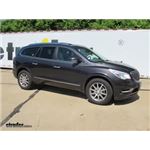
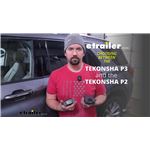
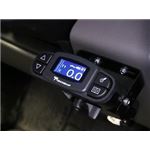
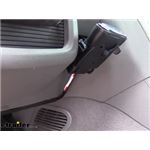
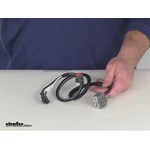





























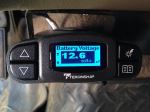



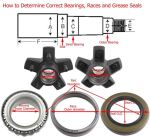

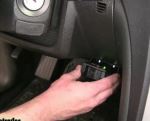






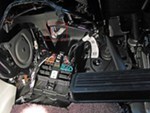
Thank you! Your comment has been submitted successfully. You should be able to view your question/comment here within a few days.
Error submitting comment. Please try again momentarily.